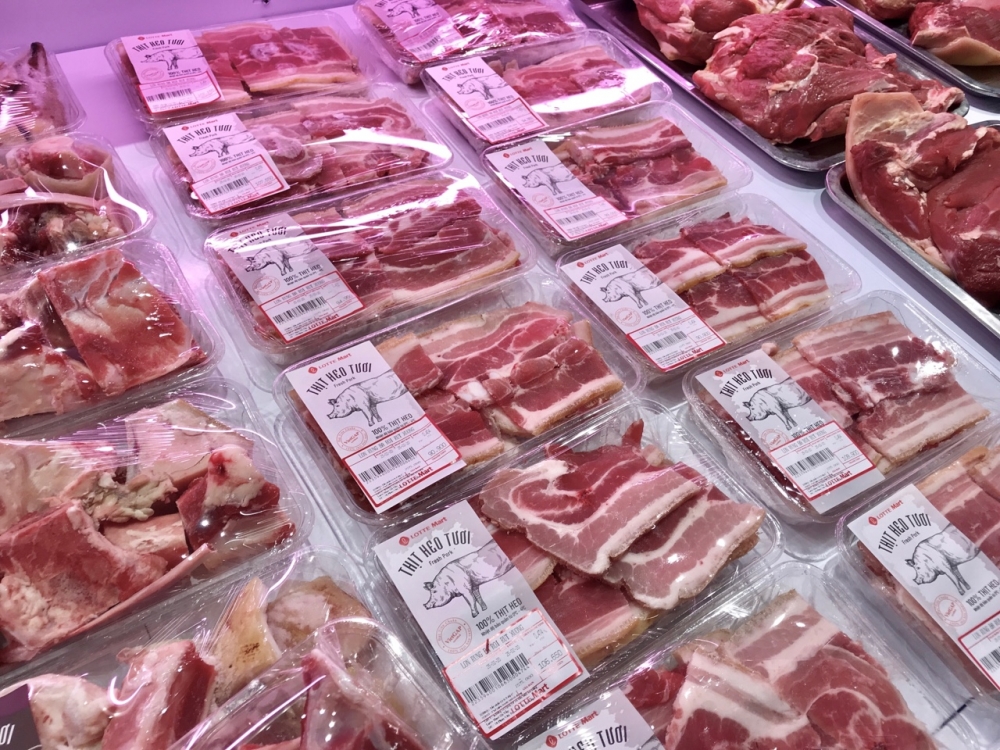 |
| Pork prices remain high in supermarkets and people’s daily markets |
Over the next four years, the industry is expected to import over 100,000 breeding pigs to repopulate the country’s pig herd, 20 percent of which have been culled following the outbreak of African swine fever in 2019.
Once the imports began, the prices of live hog initially dropped. In the northern region, the price fell to VND85,000-VND91,000 per kg, and in the central and southern regions to VND84,000-VND88,000 per kg and VND85,000-VND88,000 per kg, respectively.
However, retail pork prices in the daily markets are still at record highs. At people’s daily markets, such as Hanoi’s Kim Lien, Thai Ha, Nam Trung Yen and Lang Ha markets, pork is sold for VND140,000-170,000 per kg. In Hanoi supermarkets, a kilogram goes for VND250,000.
One reason for this anomaly may lie in the price of imported swine. The Ministry of Industry and Trade’s Agency of Foreign Trade say Thai pig breeders have increased prices in response to demand from Vietnam. With the additional costs of transport through Laos and Cambodia, Thai pork is sold at VND81,000-82,000 per kg, similar to the prices of domestic pork.
Gabor Fluit, director-general of the De Heus Group Asia, said the prices of Vietnam’s live hog are among the highest in the world, and are difficult to reduce deeply in the short term because African swine fever still limits supply. According to Rabobank, pork prices will continue to fluctuate sharply in 2020 due to the impact of the Covid-19 pandemic.
The Ministry of Agriculture and Rural Development, facing the challenge of trying to repopulate the country’s pig herd and keep prices down, is advising people to consume more beef, poultry and eggs in order to reduce pressure on pork supplies.
| According to the General Statistics Office of Vietnam, live hog production reached an estimated 1.6 million tonnes in the first half of the year, a drop of 8.8 percent compared to a year ago. |








